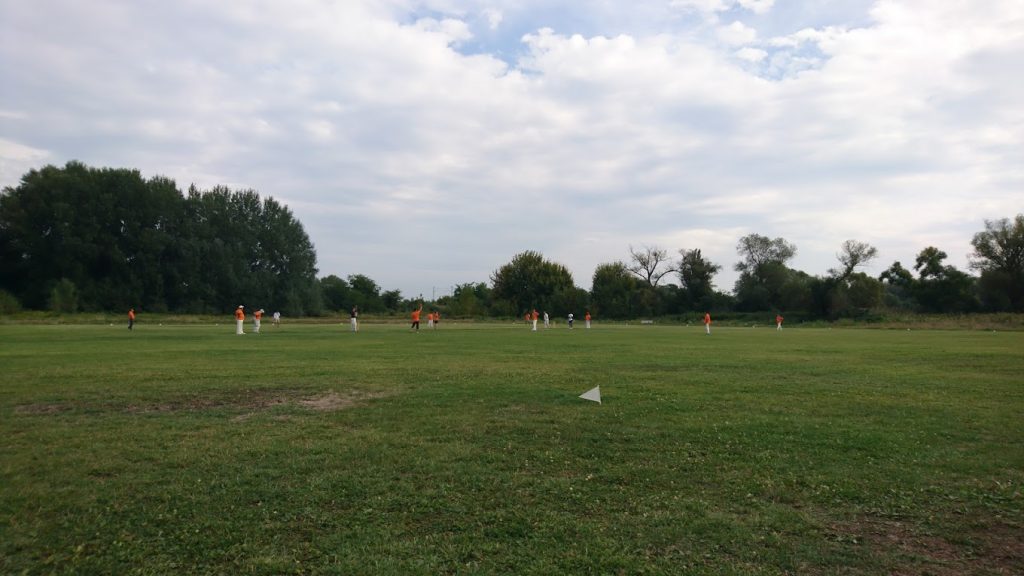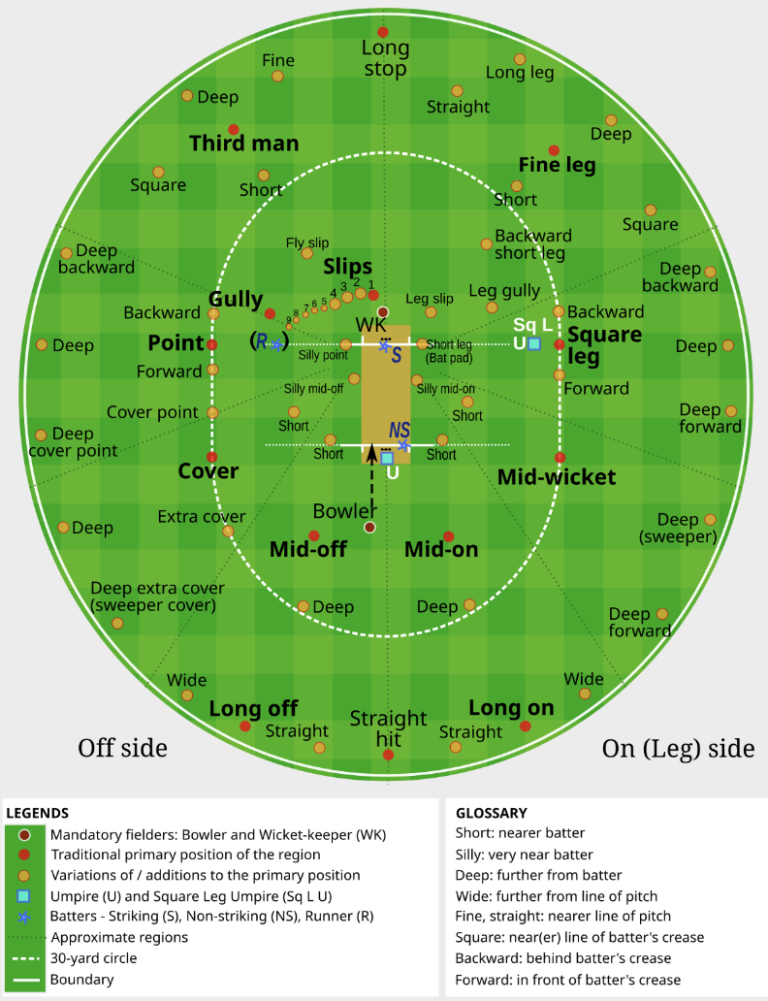Weather Condition
🌤️ The GB Oval in Hungary generally offers sunny to partly cloudy weather, especially during the European summer. Temperatures hover between 22–30°C with low humidity, meaning minimal assistance for swing bowlers and ideal conditions for batting throughout the day.
Bat First Win vs Bat Second Win
📊 Out of 5 T20 matches, 3 were won by teams batting first and 2 by teams chasing, indicating a slight edge to defending sides, especially with strong totals. However, with shorter boundaries and a flat pitch, chasing isn’t a major disadvantage.
After Toss Decision
🎯 Captains have shown a slight preference to bat first here, especially in clear weather. Teams aiming to put scoreboard pressure tend to do better, as the pitch starts to slow down a bit in the second innings.
Pitch Behaviour
The GB Oval pitch is known for being batting-friendly, with good bounce and pace. The outfield is quick and the boundary sizes are relatively small, making this a high-scoring venue. Bowlers, especially pacers, need to rely on variations and yorkers, while spinners have some say in the middle overs due to the dry nature of the surface.
Key Stats
Total Matches: 5
Matches Won Batting First: 3
Matches Won Bowling First: 2
Average 1st Innings Score: 171
Average 2nd Innings Score: 107
Highest Total: 222/6 (HUN vs SLV)
Lowest Total: 63/10 (ND vs HUN)
Highest Chased: 151/1 (HUN vs SLV)
Lowest Defended: 222/6 (HUN vs SLV)
Recent Matches on Venue
📌 The venue has produced dominant batting displays, particularly by Hungary who’ve consistently posted or chased big totals. Teams failing to adapt to the pitch’s pace have struggled, especially with the bat while chasing. The last few matches have shown that a score of 160+ is usually par, and anything below that becomes tricky to defend.
Final Analysis
🏏 GB Oval is a batting paradise, offering consistent bounce, fast outfield, and short boundaries. Teams prefer setting a total and defending, but chasing is not out of reach if the top order fires. Expect a run-fest unless early wickets disrupt the rhythm.

GB Oval Cricket Stadium Pitch Report
- Full Name:
- Former names:
- Location:
- Operator:
- Seating Capacity:
- Field size:
- Surface:
- Floodlights: Yes
- End names:
- Home team:
- Construction Architect (Contractor):
- Boundary Length (Dimension):
- Also known as:
GB Oval Cricket Ground Dimensions
Although the exact dimensions of the ground are not publicly specified in full detail, like many international-standard cricket grounds, it follows the general requirements set by the International Cricket Council (ICC). The boundary distances typically range from 55 to 70 meters for the square boundaries (around the sides of the pitch) and can extend up to 75 to 80 meters for the straight boundaries (down the ground, aligned with the bowler’s delivery).
- Leg Side Boundary Length:
- Off Side Boundary Length:
- Straight Boundary Length:
- Back Side Boundary Length:

GB Oval Cricket Ground Records and Venue Stats: T20, T10, ODI, Test
T20 Stats
- Total Matches: 0
- Matches Won Batting First: 0
- Matches Won Bowling First: 0
- Average 1st Innings Score: 0
- Average 2nd Innings Score: 0
- Highest Total Recorded: 0
- Lowest Total Recorded: 0
- Highest Score Chased: 0
- Lowest Score Defended: 0
- Tied Matches: 0
ODI Stats
- Total Matches: 0
- Matches Won Batting First: 0
- Matches Won Bowling First: 0
- Average 1st Innings Score: 0
- Average 2nd Innings Score: 0
- Highest Total Recorded: 0
- Lowest Total Recorded: 0
- Highest Score Chased: 0
- Lowest Score Defended: 0
- Tied Matches: 0
Test Stats
- Total Matches: 0
- Matches won batting first: 0
- Matches won bowling first: 0
- Average 1st innings Score: 0
- Average 2nd innings Score: 0
- Average 3rd innings Score: 0
- Average 4th innings Score: 0
- Highest total recorded: 0
- Lowest total recorded: 0
- Highest score chased: 0
- Lowest score defended: 0
- Tie: 0
GB Oval Cricket Ground Is Batting Pitch Or Bowling Pitch?
Batting or Bowling Pitch
Toss Prediction
Choose Bat Or Bowl
Who Will Win / Match Winner Prediction
Match Winner
Dream 11 Team Prediction
Fantasy Team
GB Oval Cricket Ground: Venue Stats
Ground Statics
- Average First Innings Score:
- Average Second Innings Score:
- Pitch Type:
- Highest Total Recorded:
- Best Bowling Performance:
- Weather Conditions:
- Toss Advantage:
Where To Watch Live Match
Cricket enthusiasts in India are eagerly anticipating the upcoming Big Bash League (BBL) season, which promises non-stop action and excitement. Every match will be broadcast live on Star Sports 2SD and Star Sports 2HD, ensuring that fans can catch all the thrilling moments. For those who prefer watching on the go, Disney+ Hotstar offers the ultimate flexibility, letting you stream the games wherever you are, at any time. Whether you’re at home or out and about, the BBL is sure to deliver unforgettable performances and high-energy cricket, making this season an unmissable experience for all fans!
Type Of Pitch
The pitch at the GB Oval in Sződliget, Hungary, is typically a turf-based surface. It offers a balanced contest between batting and bowling, making it suitable for various formats, including Twenty20 (T20), One Day Internationals (ODIs), and First-class cricket matches. The pitch generally provides a consistent bounce, benefiting medium-paced bowlers early on, with the potential for spinners to take control as the game progresses. While fast bowlers might get some assistance in the early stages with carry and bounce, the pitch tends to become slower as the match advances, favoring spinners. This dynamic nature of the pitch ensures that teams need to adapt their strategies as the game unfolds.
GB Oval Cricket Ground: Head to Head
Team Head To Head
Weather Report & Forecast
The weather at GB Oval Szodliget in Hungary changes throughout the year, offering a mix of four distinct seasons. Winter (December to February) brings cold temperatures ranging from -2°C to 5°C, with occasional snowfall, making cricket less frequent. Spring (March to May) sees temperatures rise from 6°C to 18°C, with unpredictable weather and occasional rain showers, but still suitable for cricket. Summer (June to August) is the peak season for cricket, with warm temperatures ranging from 18°C to 30°C and dry, sunny conditions perfect for outdoor play. Autumn (September to November) brings cooler temperatures, ranging from 10°C to 20°C, along with increased rainfall, creating a transitional period with a mix of sunny and rainy days.